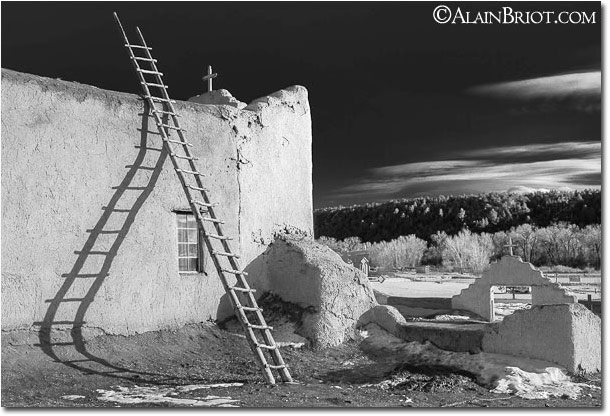|
|
|
About This Series of Essays
This series of essays features real-life experiences about selling fine art photographs. Each story exemplifies a specific aspect of the buying and selling process.
The goal of these stories is to show you how fine art photographs are sold and what happens when they do. The goal is also to demonstrate some of the most important aspects of marketing and salesmanship. To this end each story focuses on a specific aspect of the selling process.
This is the third story in this series. You can read the first story at this link and the second one at this link.
The Problem
Jerry photographs landscapes in the eastern United States and wants to create a limited-edition Folio of his work. Jerry also wants to offer matted, open edition prints of the photographs featured in the Folio. To sell his work and cover the costs associated with creating the Folio and prints, Jerry decided to start a Kickstarter project.
Kickstarter is a crowdfundraising website through which individuals seek funding from backers for creative projects. The project creator must set a funding goal and a deadline, and then offer donation options ranging from a low to a high dollar amount. Only if the funding goal is reached or exceeded by the deadline, will the project get funded. Funding on Kickstarter is all-or-nothing: projects must reach their funding goals to receive money.
Backers make pledges using a credit card. If the project does not reach its minimum funding goal by the deadline, the backers’ credit cards will not be charged and the project creator will get nothing. If the amount of funding sought is reached by the deadline, Kickstarter will charge the credit cards, take 5% of the funds raised, and send the rest to the project creator.
In this instance Jerry is seeking to fund a specific project: a limited edition Folio of 12 images of eastern United States landscapes plus a collection of matted prints. Jerry’s Folio is letter size, contains 12 photographs, an artist statement, a biography, and is presented in a custom-made Folio enclosure. Jerry set a variety of pledge options for backers, and various rewards are offered to thank the backers according to their level of support.
 Mission and Ladder |
For his Kickstarter project Jerry set a funding goal of $1500 with pledge options ranging from $1 to $85, as follows:
- $1 - Backer receives a thank you note
- $5 - Backer receives a greeting card
- $25 - Backer receives one 8x10 mat size print from the Folio
- $40 - Backer receives five 8x10 mat size print from the Folio
- $85 - Backer receives the complete Folio
Unfortunately, at the end of the funding period, Jerry only received $1000 in pledges. As a result his project did not get funded.
Jerry failed to reach his funding goal primarily because he set his Kickstarter project funding levels far too low. Jerry’s audience is small, so there simply was not enough people funding each level to make the project successful. In addition, only the top backing level were rewarded with the Folio. Since this project is about creating a Folio, the Folio should have been a reward available for all funding levels.
Even though he reached two-thirds of his goal - $1000 instead of $1500 - Jerry received no money because of Kickstarter’s all-or-nothing policy.
Jerry’s experience shows the importance of carefully planning the funding levels of a Kickstarter project. The best way to do this is to make a realistic estimate of the size of your audience. For example, can you expect 10, 100, 1000, or more backers?
It is also important to evaluate the range of support your audience can offer. For example, at which level can you expect most backers to be comfortable funding your project - is it $10, $100, $1000, or more? Finally, it is important to set your Kickstarter funding levels accordingly. Although these variables will differ from one photographer to the next, there are certain rules that apply across the board, and these are the fundamental rules of marketing. It is by applying these rules to Kickstarter that we can find a positive solution to Jerry’s problem.
The Solution
Jerry did not get discouraged and he plans to start a second Kickstarter funding campaign at a later date. When Jerry designs his next Kickstarter project I recommend that he does two main things: (1) restructure his funding levels and (2) make his rewards more exciting and appealing. Here are my suggestions:
- Set the lowest funding level at the cost of the Folio: $85
- Set the highest funding level significantly higher, I suggest $1200
- Adjust what rewards are given for each funding level
When doing a Kickstarter project you can expect to get the most funding in the middle funding levels. This is the same as offering a product in small, medium and large sizes: the most popular size is usually the medium size. ??Looking back at Jerry’s original Kickstarter project, the $25 middle funding level did attract the most backers. The lowest and highest levels got far fewer backers. If Jerry raises his entire range of funding levels, he will by the same token increase the middle funding level. For example, setting the middle level to around $300 means that only 5 backers will be necessary to reach his funding goal, provided all backers select the mid range level. However, we know that some will choose lower funding levels and that some will select higher funding levels, hence the importance of offering attractive rewards for all levels.
This new approach almost guarantees that Jerry’s project will be funded if he keeps his funding goal of $1500. Of course, if he increases his funding goal, he will have to raise the entire range of funding levels proportionally.
With these changes, I suggest the following Kickstarter funding options:
- A Folio for $85
- A Folio plus an 8x10 mat-size print for $150
- A Folio plus a 11x14 mat-size print for $250
- A Folio plus a 16x20 mat-size print for $350
- A half day spent photographing with Jerry, plus a Folio and a 16x20 matted print, for $600
- A full day spent photographing with Jerry, plus a Folio, a 16x20 matted print, and dinner at one of the locations Jerry’s photographed for his project, for $1200
The last two rewards in the list above will be available to only one donor for each level, thereby increasing their value and desirability. Regarding matted prints, the backers will be free to choose the print they want to receive among any of the 12 images in the Folio.
Using this approach it is likely that Jerry will get the $1500 he needs to fund his project. In fact he may very well exceed his funding goal.
Another solution is to use a different funding site, one that does not require the project to be fully funded to collect the money. Indiegogo offers such an option. If Jerry had funded his project through Indiegogo, he could have collected the $1000 funded by backers, even though his original $1500 funding goal had not been reached. The only caveat is that Indiegogo would have taken a bigger cut of the money transferred than if the project had been fully funded. However, since the risk is reduced, paying a higher percentage may be better than getting no money at all.
Kickstarter, as well at the other online funding sites, are often seen as a way to raise seed money to start a business or to produce a work of art (for example a motion picture). When used this way, the marketing of the product or business starts after the project has been funded. Jerry’s goal is to use Kickstarter to sell his Folio to collectors through the funding process. Jerry’s use of Kickstarter is different and may be considered a “creative” or alternative use for a crowdfunding website.
Success in marketing, and in business, often comes from being creative. Exercising your creativity gives you ideas that nobody had before. It generates new ways of thinking about an existing project and new ways of marketing a product. It makes your product interesting to potential customers not just because of the product itself but because of the way it is presented.
About Alain Briot’s Advanced Marketing Mastery Workshop on DVD
I just released a new photography marketing tutorial: the Advanced Marketing Mastery Workshop on DVD This tutorial teaches you how to sell your work in the [post]-recession environment. It is designed complement my book Marketing Fine Art Photography. While my book is a good introduction to the subject of marketing your photography, the new Mastery Workshop on DVD goes way beyond the book by giving you knowledge and information that I have not made available previously. The goal is to show you exactly what you need to do to sell your work profitably today. It also tells you what not to do so that you don't make the mistakes everyone else is making.
It includes a study of limited editions and a detailed ‘manual’ to handling stalls and objections. After reading this ‘manual’ you’ll no longer have customers ‘get one on you!’ You will know what to say, no matter what they come up with. And if there is a stall or objection I forgot to include (unlikely but possible) let me know and I’ll add it to the free DVD Owner Updates Area together with the answers appropriate for this specific stall or objection. In short, you will learn how to make sales to people that before you would have let walk away! Think about how many sales you lost that are now going to be yours.
It also includes much more but I don’t have the space to explain everything here so go to the Advanced Mastery DVD description page to read the rest of the story.
Alain Briot - NPN 2054
|
 Alain Briot creates fine art photographs, teaches workshops and offers DVD tutorials on composition, conversion, optimization, printing and marketing photographs. Alain is also the author of Mastering Landscape Photography. Mastering Photographic Composition, Creativity and Personal Style and Marketing Fine Art Photography. All 3 books are available from Amazon and other bookstores as well from Alain’s website.
Alain Briot creates fine art photographs, teaches workshops and offers DVD tutorials on composition, conversion, optimization, printing and marketing photographs. Alain is also the author of Mastering Landscape Photography. Mastering Photographic Composition, Creativity and Personal Style and Marketing Fine Art Photography. All 3 books are available from Amazon and other bookstores as well from Alain’s website.
You can find more information about Alain's work, writings and tutorials as well as subscribe to Alain’s Free Monthly Newsletter on his website at http://www.beautiful-landscape.com To subscribe simply go to http://www.beautiful-landscape.com and click on the Subscribe link at the top of the page. You will have access to over 40 free essays by Alain, in PDF format, immediately after subscribing.
Alain welcomes your comments on this essay as well as on his other essays. You can reach Alain directly by emailing him at alain@beautiful-landscape.com.